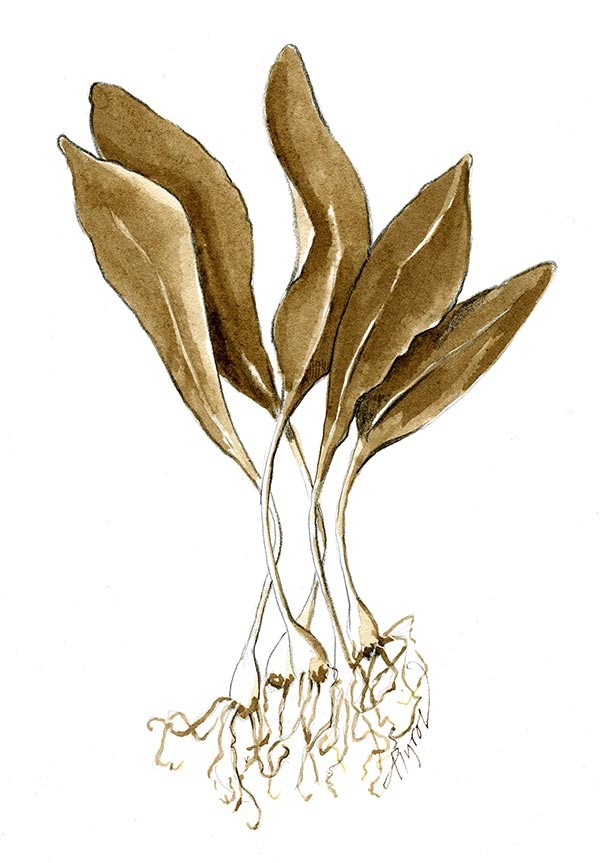
The white bulbs of wild leeks, also called ramps (especially in the south), can be eaten year round, but it’s the early leaves that are most appreciated. In pre-freezer days, ramps were the first greens available after five or so months of potatoes and they were considered important as well as good tasting. Ramp festivals are still held in much of Appalachia to celebrate the arrival of this nutritious fresh food, and these tourist attractions have become so successful that in some places ramps are overharvested.
Wild leeks are spring ephemerals that have no flowers in the spring. I know this is confusing; there’s a tendency to call every spring-blooming thing an ephemeral. But most spring wildflowers keep their leaves through the summer and therefore don’t qualify – it’s the extra short lifespan of the photosynthetic machinery that defines a spring ephemeral, not the timing of flowering. The rounded flower heads of leeks appear in July, well after the leaves have withered and disappeared.
Wild leeks favor alluvial floodplains and rich moist woods and occur throughout the northeast and mid-west, to the far north in Canada, and in the mountainous parts of the southeast. It is said that they prefer north-facing slopes, and that squares with my experience. Just near where I live there’s a north-facing slope almost completely covered in leeks that faces a leek-less south-facing one across a small brook. North facing slopes are more likely to be moist than sunbaked south-facing terrain, and leeks don’t mind cold temperatures at all.
Unlike most plants, they grow best in the cool temperatures of early spring and tend to fade when it’s hot. The canopy in the hardwood forests that are home to wild leeks is closed by the end of May, and there’s not much time between snowmelt and dense shade. Like their fellow spring ephemerals, leek leaves are in a big hurry to manufacture a year’s worth of carbohydrates.
Wild leeks are often easy to find, for in the proper habitat the ground may be thick with their broad sea green leaves and in late April they’re almost the only green on an otherwise brownish forest floor. False hellebore is sometimes found in the same places and at the same time, but its large pleated leaves have no oniony smell – which is helpful because false hellebore is poisonous. Another difference is that the lower part of a leek leaf has a purplish blush.
Coming across the white flowers in July is a bit strange. The leaves are long gone: the domed balls of crisp white flowers are on leafless nine-inch stalks. This strange separation of leaves and flowers may be because pollinators are more numerous in July than in May. And light on the forest floor is more plentiful in May than in July. Maybe the strange thing is that other plants haven’t figured this out.
The shiny black seeds look like small beads and often stay on the plants through the winter. Wild leeks also reproduce by forming offshoots from the parent bulb. Sometimes these firmly rooted clumps are so densely packed that they are a bit hard to dig up.
In Vermont, Abenaki Native Americans called these plants winooski and they grew abundantly along what is still called the Winooski River. The name Chicago, too, is from shiko’ko, a Menominee word for leeks. Native Americans used leeks medicinally for many ailments as well as gastronomically.
There are many ways to cook wild leeks, some quite complicated, but none better than frying them in butter until they are completely soft. Bacon fat is another recommended medium and batter fried versions are especially popular in the southern states. They can be made into pesto and used raw in salads and sandwiches, but raw leeks are not for everyone. Indigestion is a possible consequence, so best for the inexperienced eater to start with a small serving.
A much less common variety, sometimes called narrow-leaved wild leek (Allium tricoccum var. burdickii), lacks the purplish blush on the stem.


Discussion *